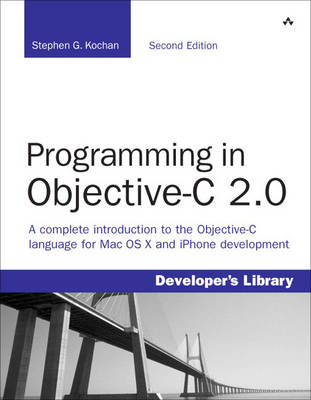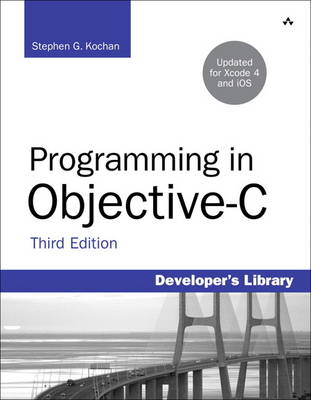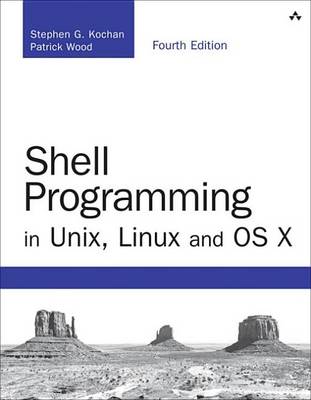Developer's Library
6 total works
THE #1 BESTSELLING BOOK ON OBJECTIVE-C 2.0
Programming in Objective-C 2.0 provides the new programmer a complete, step-by-step introduction to Objective-C, the primary language used to develop applications for the iPhone, iPad, and Mac OS X platforms.
The book does not assume previous experience with either C or object-oriented programming languages, and it includes many detailed, practical examples of how to put Objective-C to use in your everyday iPhone/iPad or Mac OS X programming tasks.
A powerful yet simple object-oriented programming language that’s based on the C programming language, Objective-C is widely available not only on OS X and the iPhone/iPad platform but across many operating systems that support the gcc compiler, including Linux, Unix, and Windows systems.
The second edition of this book thoroughly covers the latest version of the language, Objective-C 2.0. And it shows not only how to take advantage of the Foundation framework’s rich built-in library of classes but also how to use the iPhone SDK to develop programs designed for the iPhone/iPad platform.
Table of Contents
1 Introduction
Part I: The Objective-C 2.0 Language
2 Programming in Objective-C
3 Classes, Objects, and Methods
4 Data Types and Expressions
5 Program Looping
6 Making Decisions
7 More on Classes
8 Inheritance
9 Polymorphism, Dynamic Typing, and Dynamic Binding
10 More on Variables and Data Types
11 Categories and Protocols
12 The Preprocessor
13 Underlying C Language Features
Part II: The Foundation Framework
14 Introduction to the Foundation Framework
15 Numbers, Strings, and Collections
16 Working with Files
17 Memory Management
18 Copying Objects
19 Archiving
Part III: Cocoa and the iPhone SDK
20 Introduction to Cocoa
21 Writing iPhone Applications
Part IV: Appendixes
A Glossary
B Objective-C 2.0 Language Summary
C Address Book Source Code
The book makes no assumptions about prior experience with object-oriented programming languages or with the C language (which Objective-C is based upon). Because of this, both beginners and experienced programmers alike can use this book to quickly and effectively learn the fundamentals of Objective-C. Readers can also learn the concepts of object-oriented programming without having to first learn all of the intricacies of the underlying procedural language (C).
This unique approach to learning, combined with many small program examples and exercises at the end of each chapter, makes Programming in Objective-C ideally suited for either classroom use or self-study. While the Objective-C language itself has gone through relatively minor changes since the introduction of Objective-C 2.0, the Apple development tools that programmers use for Objective-C development on the Mac and on iOS have changed significantly in a very short period of time.
The third edition of Programming in Objective-C includes numerous updates and improvements throughout the book:
Shell Programming in Unix, Linux and OS X
by Stephen G Kochan and Patrick Wood
Shell Programming in Unix, Linux and OS X is a thoroughly updated revision of Kochan and Wood’s classic Unix Shell Programming tutorial. Following the methodology of the original text, the book focuses on the POSIX standard shell, and teaches you how to develop programs in this useful programming environment, taking full advantage of the underlying power of Unix and Unix-like operating systems.
After a quick review of Unix utilities, the book’s authors take you step-by-step through the process of building shell scripts, debugging them, and understanding how they work within the shell’s environment. All major features of the shell are covered, and the large number of practical examples make it easy for you to build shell scripts for your particular applications. The book also describes the major features of the Korn and Bash shells.
Learn how to…
- Take advantage of the many utilities provided in the Unix system
- Write powerful shell scripts
- Use the shell’s built-in decision-making and looping constructs
- Use the shell’s powerful quoting mechanisms
- Make the most of the shell’s built-in history and command editing capabilities
- Use regular expressions with Unix commands
- Take advantage of the special features of the Korn and Bash shells
- Identify the major differences between versions of the shell language
- Customize the way your Unix system responds to you
- Set up your shell environment
- Make use of functions
- Debug scripts
Contents at a Glance
1 A Quick Review of the Basics
2 What Is the Shell?
3 Tools of the Trade
4 And Away We Go
5 Can I Quote You on That?
6 Passing Arguments
7 Decisions, Decisions
8 ‘Round and ‘Round She Goes
9 Reading and Printing Data
10 Your Environment
11 More on Parameters
12 Loose Ends
13 Rolo Revisited
14 Interactive and Nonstandard Shell Features
A Shell Summary
B For More Information
Readers can also learn the concepts of contemporary object-oriented programming without having to first learn all of the intricacies of a procedural language like C. This approach, combined with many small program examples and exercises at the end of each chapter, makes it ideally suited for either classroom use or self-study.
Shell Programming in Unix, Linux and OS X - Chapter Review Questions and Answers
by Stephen Kochan and Patrick Wood




